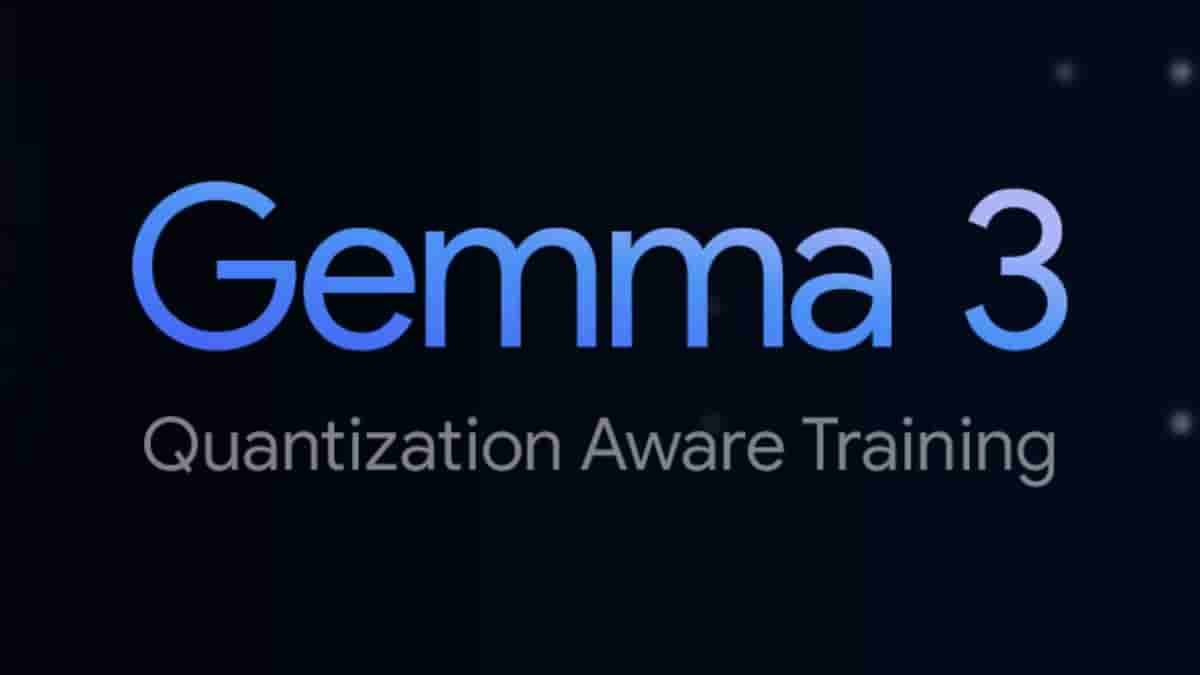Google Launches Gemma 3 QAT Models Running Advanced AI on Consumer Hardware
Google has unveiled quantized versions of the Gemma 3 27B QAT model, paving the way for cutting-edge AI to operate efficiently on everyday consumer-grade hardware. These new Quantization-Aware Training variants significantly decrease memory requirements while preserving performance levels similar to their full-precision counterparts. This milestone marks a significant shift in making advanced AI capabilities more accessible on personal devices.
Revolutionizing AI Deployment
In a humble Brooklyn apartment, software developer Maya Chen demonstrates the power of Google's Gemma 3 27B QAT model by running complex AI tasks that traditionally demanded expensive cloud services or specialized hardware. Chen leverages a two-year-old NVIDIA RTX 3090 graphics card to execute tasks that were previously unattainable on personal hardware.
The release of the Gemma 3 models signifies a breakthrough in democratizing cutting-edge AI, allowing it to operate efficiently on widely available consumer hardware. While the initial Gemma 3 launch established it as a leading open model, the high memory requirements restricted its deployment to costly specialized hardware. The introduction of QAT variants has transformed this landscape entirely.
Technical Breakthrough in Model Compression
The quantized models represent a significant advancement in AI model compression. While previous methods aimed at reducing model size often compromised performance, Google's Quantization-Aware Training integrates the compression process during the training phase itself, ensuring optimal functionality even with reduced numerical precision.

By implementing QAT during training and leveraging non-quantized checkpoints, Google has managed to reduce the perplexity drop by 54% compared to standard quantization techniques, as noted by machine learning experts.
Drastic Reduction in Memory Requirements
The memory footprint of the Gemma 3 27B model has shrunk from 54GB to just 14.1GB, a remarkable reduction of nearly 74%. Similarly, the 12B, 4B, and 1B variants have also witnessed significant reductions in memory footprint, enabling these previously inaccessible models to operate effectively on consumer hardware.
Minimal Impact on Performance
Despite the reduction in memory requirements, Google's QAT models exhibit minimal impact on performance, with independent benchmarks suggesting that these models maintain accuracy within 1% of their full-precision counterparts. In the Chatbot Arena Elo rankings, Gemma 3 models have secured impressive scores, outperforming other quantized models while consuming less computing power.

Expanded Capabilities and Ease of Integration
Google's Gemma 3 models also feature architectural innovations that enhance their capabilities beyond text processing. The integration of a vision encoder enables these models to process images alongside text, albeit with some limitations in visual understanding compared to specialized systems.
Support for extended context windows allows the AI to process longer documents and conversations, setting them apart from other consumer-accessible models. The integration with popular developer tools and ecosystems has facilitated rapid adoption among independent developers and researchers.
Challenges and Future Prospects
While the Gemma 3 models offer significant advancements, they still face limitations in certain areas such as reasoning across extensive inputs and nuanced visual understanding. The reliance on knowledge distillation from proprietary teacher models and opacity in post-training methodology pose challenges for reproducibility in the broader AI research community.
Despite these challenges, Google's release of Gemma 3 QAT models represents a significant stride towards making advanced AI more accessible to developers, researchers, and enthusiasts. The democratization of AI capabilities through local deployment on common hardware has the potential to spur innovation and broaden accessibility in the AI landscape.




















